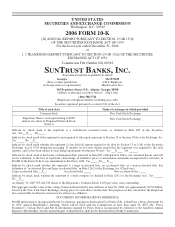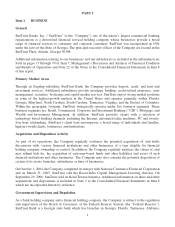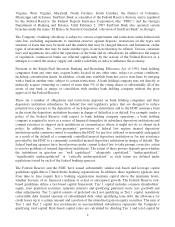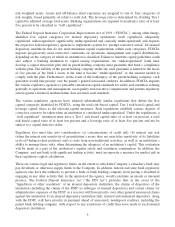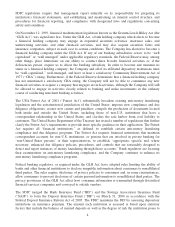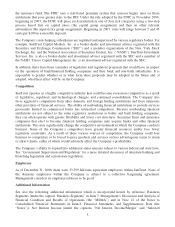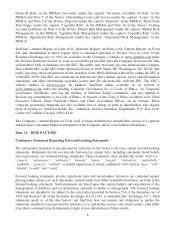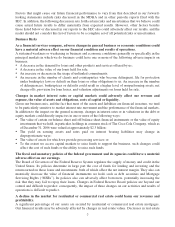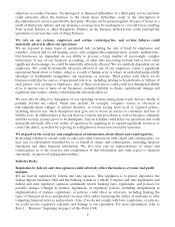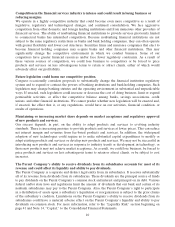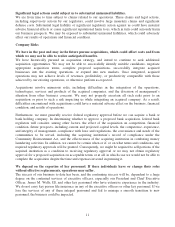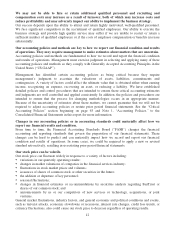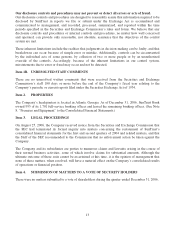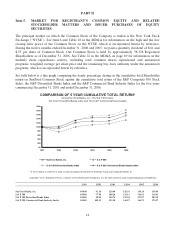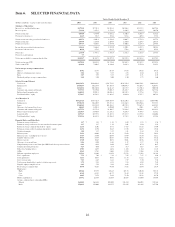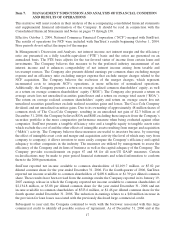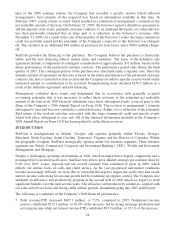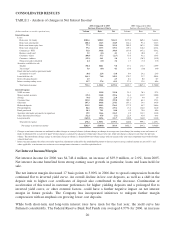SunTrust 2006 Annual Report Download - page 23
Download and view the complete annual report
Please find page 23 of the 2006 SunTrust annual report below. You can navigate through the pages in the report by either clicking on the pages listed below, or by using the keyword search tool below to find specific information within the annual report.Competition in the financial services industry is intense and could result in losing business or
reducing margins.
We operate in a highly competitive industry that could become even more competitive as a result of
legislative, regulatory and technological changes, and continued consolidation. We face aggressive
competition from other domestic and foreign lending institutions and from numerous other providers of
financial services. The ability of nonbanking financial institutions to provide services previously limited
to commercial banks has intensified competition. Because nonbanking financial institutions are not
subject to the same regulatory restrictions as banks and bank holding companies, they can often operate
with greater flexibility and lower cost structures. Securities firms and insurance companies that elect to
become financial holding companies may acquire banks and other financial institutions. This may
significantly change the competitive environment in which we conduct business. Some of our
competitors have greater financial resources and/or face fewer regulatory constraints. As a result of
these various sources of competition, we could lose business to competitors or be forced to price
products and services on less advantageous terms to retain or attract clients, either of which would
adversely affect our profitability.
Future legislation could harm our competitive position.
Congress occasionally considers proposals to substantially change the financial institution regulatory
system and to expand or contract the powers of banking institutions and bank holding companies. Such
legislation may change banking statutes and the operating environment in substantial and unpredictable
ways. If enacted, such legislation could increase or decrease the cost of doing business, limit or expand
permissible activities, or affect the competitive balance among banks, savings associations, credit
unions, and other financial institutions. We cannot predict whether new legislation will be enacted and,
if enacted, the effect that it, or any regulations, would have on our activities, financial condition, or
results of operations.
Maintaining or increasing market share depends on market acceptance and regulatory approval
of new products and services.
Our success depends, in part, on the ability to adapt products and services to evolving industry
standards. There is increasing pressure to provide products and services at lower prices. This can reduce
net interest margin and revenues from fee-based products and services. In addition, the widespread
adoption of new technologies could require us to make substantial capital expenditures to modify or
adapt existing products and services or develop new products and services. We may not be successful in
introducing new products and services in response to industry trends or development in technology, or
those new products may not achieve market acceptance. As a result, we could lose business, be forced to
price products and services on less advantageous terms to retain or attract clients, or be subject to cost
increases.
The Parent Company’s ability to receive dividends from its subsidiaries accounts for most of its
revenue and could affect its liquidity and ability to pay dividends.
The Parent Company is a separate and distinct legal entity from its subsidiaries. It receives substantially
all of its revenue from dividends from its subsidiaries. These dividends are the principal source of funds
to pay dividends on the Parent Company’s common stock and interest and principal on its debt. Various
federal and/or state laws and regulations limit the amount of dividends that our bank and certain of its
nonbank subsidiaries may pay to the Parent Company. Also, the Parent Company’s right to participate
in a distribution of assets upon a subsidiary’s liquidation or reorganization is subject to the prior claims
of the subsidiary’s creditors. Limitations on the Parent Company’s ability to receive dividends from its
subsidiaries could have a material adverse effect on the Parent Company’s liquidity and ability to pay
dividends on common stock. For more information, refer to the “Liquidity Risk” section beginning on
page 41 and Note 14, “Capital,” to the Consolidated Financial Statements.
10


